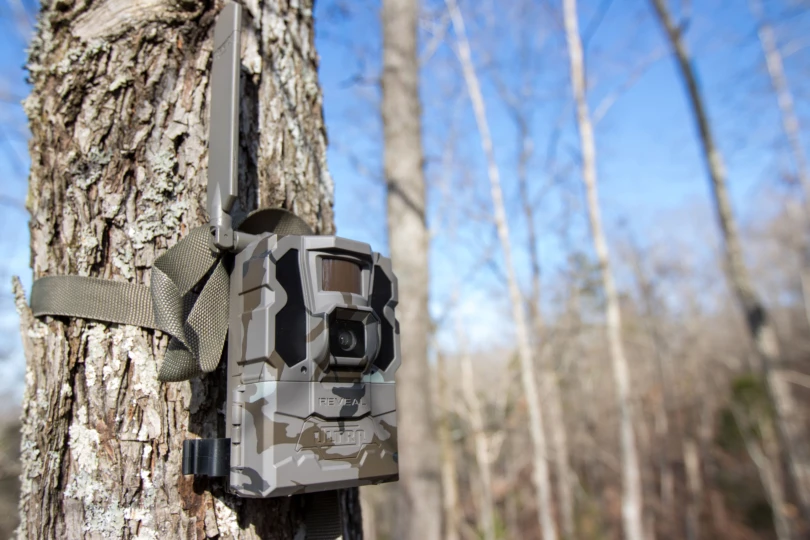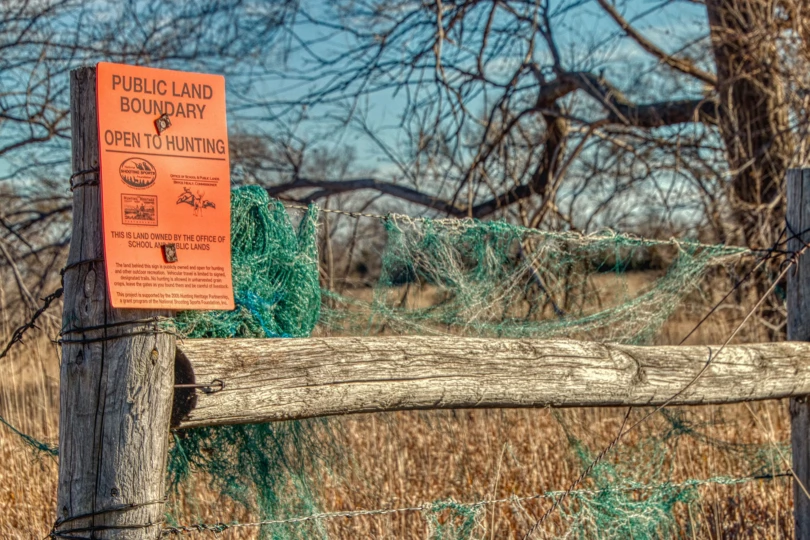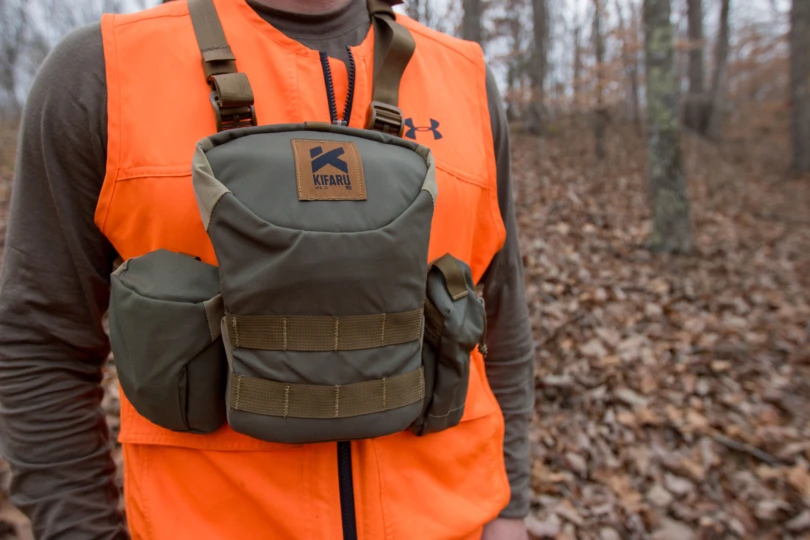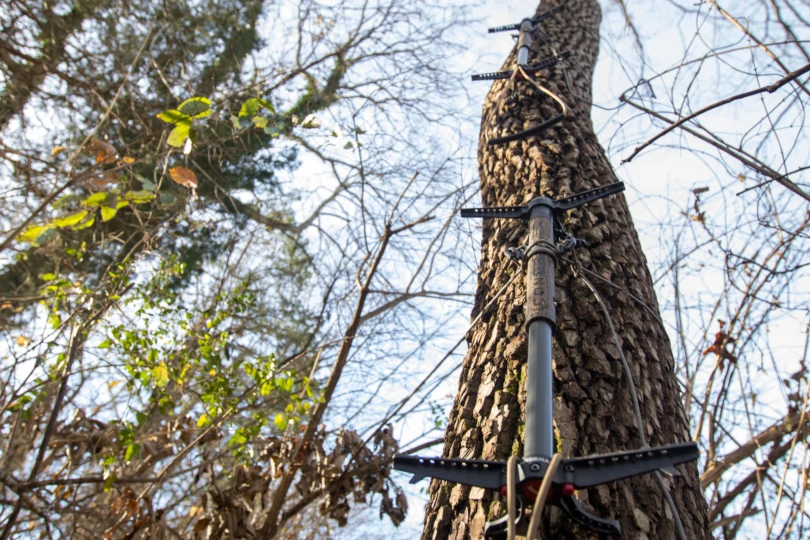Eating a wild canid might actually be for the faint of heart. Or so it went at the annual conservation event in Missoula, Montana.
Had I not known what I was eating, I might not have believed you when I finally found out. But the setting was the rambunctious 10th annual Backcountry Hunters & Anglers Rendezvous in Missoula, Mont. And when it comes to food, there’s always a lot of wild game on the table.
So, the unexpected is bound to happen.
This year, between the competitive Wild Game Cook-Off and folks’ personal grills, wild meat offerings ranged from omnivores like Alaskan grizzly bear to carnivores like Montana mountain lion. And some more common options were on display, from midwestern whitetails to east coast doves.
Additionally, a full bison was broken down in a group effort early in the weekend as part of an intricate learning experience. Montana Representative Tyson Running Wolf and his fellow members of the Blackfeet tribe led the proceedings with a blessing, songs, and shared knowledge. This, by the way, is worth a full watch.
And in a moment of communing, conservationist and public lands advocate Randy Newberg gifted the folks at Burch Barrel a hindquarter from a Montana wolf to prepare and share with attendees.
For me, the latter was the highlight — and exemplifier — of the Rendezvous experience.
A Shift in My Own Meat-Eating Paradigm

As someone who came to hunting as an adult, I’ve been wildly lucky with the variety of wild game I’ve eaten in the past 7 years.
I’ve eaten muskox, sandhill crane, caribou, bighorn sheep, mountain goat, black bear, mountain lion, and beaver — in addition to all of the more common wild game species like elk, moose, fish, bison, deer, and birds of all sorts.
Much of this was on the job and with friends in my time working on the show MeatEater, where much of what was hunted and cooked by Steven Rinella and others was shared across our then-small staff.
It was all good. Not a bite tasted “gamey” or gross. And not one animal was drowned in something to cover up a bad flavor. There was a congruency across the board — meat is meat.
These experiences made up an internal shift in my own gastronomical life. And I recalibrated my knowledge of the few animals that make up our industrial meat cycle. The world of food widens with a hunter’s understanding. It becomes more malleable, more tangible, and much more interesting.
And that nuance stretches across both taste buds and an ethical understanding of what the meat in our freezer entails.
Hunting: Death Fuels Life
No matter what we eat, a living being will shift from life to death in order to fuel our pursuits. Whether it’s the apple in my hand, the milled grain in my bread, the ingredients in a Lara Bar, or the pronghorn backstrap thawing on the counter, the cycle is unending.
For me, choosing to engage and get intimate in this cycle continues to reshape my personal connection to being. I don’t see the death of an animal as a definitive end, but as an extension into new forms of life.
And I regard it whether that life continues on in the bacteria and nutrients it shares with the living topsoil beneath it — or in a carefully tended roast that is passed around the table for dinner.
The preciousness given to conscious life sets an interesting hierarchical perspective to how we seem to approach our own very conscious lives. But in my experience as a hunter, the gap becomes ever more minuscule. I am able to touch the continuing process, partake in it, and hone a life around this connection.
I’ll break it down. A few years ago, had you offered me wolf, my horror would have mingled with my curiosity. I’m not sure whether I’d have said yes.
Suffice it to say, the process has been slow, now 7 years in the making. And really, what has become a spiritual and ecological awakening for me is simply a way of life for the traditional hunters that I know.
They step into the realm of death easily and often without weight; it’s what their parents and grandparents did. It’s what they’ve done since they were children.
But, Can You Eat Wolf?

In both hunting circles and beyond, ideas of certain animals being more or less edible than others are pretty darned pervasive. In some homes, that even begins at venison.
The reality is more objective than subjective. Any properly processed animal is more or less edible. Any poorly tended and processed animal more or less isn’t. The subjectivity lies in the person who is doing the preparation and the cooking.
Wolf is no different in its being. And yet, it feels different.
What we call “wanton waste” laws don’t apply to many creatures that are hunted, wolves included. These regulations ensure that the great majority of hunted meat is carried out of the field and hopefully, into freezers or some sort of utilitarian scenario.
Wanton waste laws vary by state. Montana, for example, applies skull, hide, and wanton waste laws to black bears, whereas Wyoming only requires that the pelt and skull be taken.
Omnivores tend to be the animals most often left out of the wanton waste requirement. It’s true that many will carry the roundworm trichinosis, a nonfatal fate my former coworkers endured a few years back.
But it’s simple enough to avoid: cook meat to 165 degrees for at least 20 minutes, and take a few precautions when handling. It’s not much different than handling and cooking raw chicken to avoid salmonella. The solution is simply brief education.
Really, much of the resistance to eating omnivores lies in both the unfamiliar and familiar. It’s unfamiliar in that the majority of us simply don’t do it.
Birds and ungulates that most of us never personally encounter make up the majority of our meat. And more familiarly, bears, wolves, and mountain lions resemble the animals that hold space in our emotional lives; their front-facing eyes and expressions equal that of the dogs and cats we share our homes with.
What does it mean then — hierarchically — for me to be a hunter who no longer balks at the idea of eating a fellow predator? I think it means that a new kind of egalitarianism can exist, not only in the way I choose to live my life as an ethically minded omnivore — but also in how I think in terms of what meat is beyond the packaging.
Unpacking the ‘Why’ of Packing Out Wolf Meat

Newberg killed this timber wolf in Montana’s deer and elk season, on a whim with a tag in his pocket on a small tract of private land. He was hunting whitetail does specifically, but he happened upon this lone female wolf early in the morning. A few howls brought the wandering wolf into 300 yards, and with one quick shot, Randy filled his first wolf tag.
Most of the meat was salvageable, and Newberg packed out both hindquarters, a front quarter, the backstraps, the hide, and the skull. Legally, this is much more than required. So why do it?
“I eat what I shoot. These rumors that certain meats are inedible do a disservice to hunting,” Newberg said. “If some guy in a bar said wolf is inedible, I’ll tell you that isn’t true.”
In his lifetime, he’s heard rumors that pronghorn, javelina, mountain lion, and other wild meats didn’t make for good eating. And yet, through experience, he learned that they were. However, Newberg’s first wolf-eating experience didn’t go so well.
“I just didn’t cook it the way it needed to be cooked,” Newberg told GearJunkie. “This process [of how the wolf was cooked at Rendezvous] convinced me to pack out every wolf I shoot.” Although Randy packed out his wolf, he’d been on wolf hunts with friends where they’d left the meat in the field.
“That won’t happen again,” he said. “And folks will try to say I’m imposing my will on other hunters. That’s not the case. I simply wanted to try it because it was interesting. And I think more hunters would eat it if they knew it was this good.”
Thankfully, the final hindquarter of his timber wolf ended up unthawing just in time for BHA Rendezvous.
How to Cook and Eat Wolf

In the hands of Burch Barrel’s Corey Piersol, the hindquarter was cooked in — you guessed it — a Burch Barrel ($895).
Prior to cooking, Piersol brined the hindquarter in a salt and lemon mixture for 24 hours; though if he’d had time, he’d have brined for 72 hours.
He then covered the hindquarter in rendered black bear lard, prior to creating an aluminum foil and butcher paper boat to cook the meat in. Salt, acid, fat, and heat. Sound familiar?
He then slow-cooked it at a temp around 200 degrees for 6 hours in the Burch Barrel, aiming for a 208-degree finish. This badass barbecue set-up sits high on a tripod, boasts an oven thermometer, and is so dang variable you can cook anything from a pie to a perfectly seared steak.
Piersol cooked the wolf low and slow in a barbacoa spice mixture. Then, he and his team dressed it up as birria tacos upon completion.
“A lot of times people will cover the taste of the meat with something like barbecue sauce,” Piersol said. “I didn’t want to do that. I wanted to show that this meat could be good, but it was also a risk.”
The result of Piersol’s risk-taking, I’ll say, was phenomenal. But it was also simple.
As Piersol noted, the taste of the wolf meat was not covered up or dressed over. It was simply enhanced by smoke, spice, and prolonged cooking. On its own, it wasn’t dry but moist and similar to a braised pulled pork or pot roast in texture.
And the flavor in comparison to other red meats reminded me of the difference between white chicken meat and dark chicken meat. It was a bit bolder than your typical red meat, but nothing so out of the ordinary that I’d be surprised by it.
BHA Rendezvous: What to Expect (The Unexpected)

Of all the moments I’ve had over the years that I’ve attended BHA’s Rendezvous, eating wolf struck me as primal and different, yet it was altogether accordant to the annual event. It didn’t happen on the main stage or as a premier ticketed event; it was simply a word-of-mouth part of the communal gathering.
Sporting-focused events often tend to lean into what I think of as the bro-ification of hunting. It’s an air that tends to make many of us seem like Others, especially if we’re not dudes wearing a logo tee, a flat-brimmed hat, quick-dry shorts, and a rubber wedding ring.
And Rendezvous can certainly take on that air in some corners. But, in my opinion, it’s still one of the most welcoming and inclusive events in hunting and angling.
The Blackfeet bison blessing and breakdown, combined with the panel on bison management, gave credence to an Indigenous connection to lands and wildlife that is rarely acknowledged in hunting and public lands advocacy spaces. It’s a reckoning in which the hunting community still has a long way to go, but it’s a start.
And I was doubly thrilled to hang out with the founders of Hunters of Color. Their booth was consistently crowded over the 2 days, and they were able to sell merch and raise money to mentor new hunters in their ever-growing community.
It’s the Little Things
These smaller interactions make up the bigger whole. Micro-communities pop up everywhere, for a few minutes or for the entire weekend. And, of course, it’s also just a lot of fun to see old friends, make new ones, and celebrate the year’s stories and accomplishments.
But it’s the smaller interactions and conversations that often cause me to dwell on these bigger ethical and ecological questions that nag me once the event comes to a close.
For some reason, a few bites of wolf led me to a personal watershed moment. Eating a wild canid is a rare thing to experience, and yet, eating what we choose to kill — as much as we can — is simply the right and primitively normal thing to do.
Death begets life in consumption, wolf or otherwise. For me, it felt like a wild moment worth sharing.







